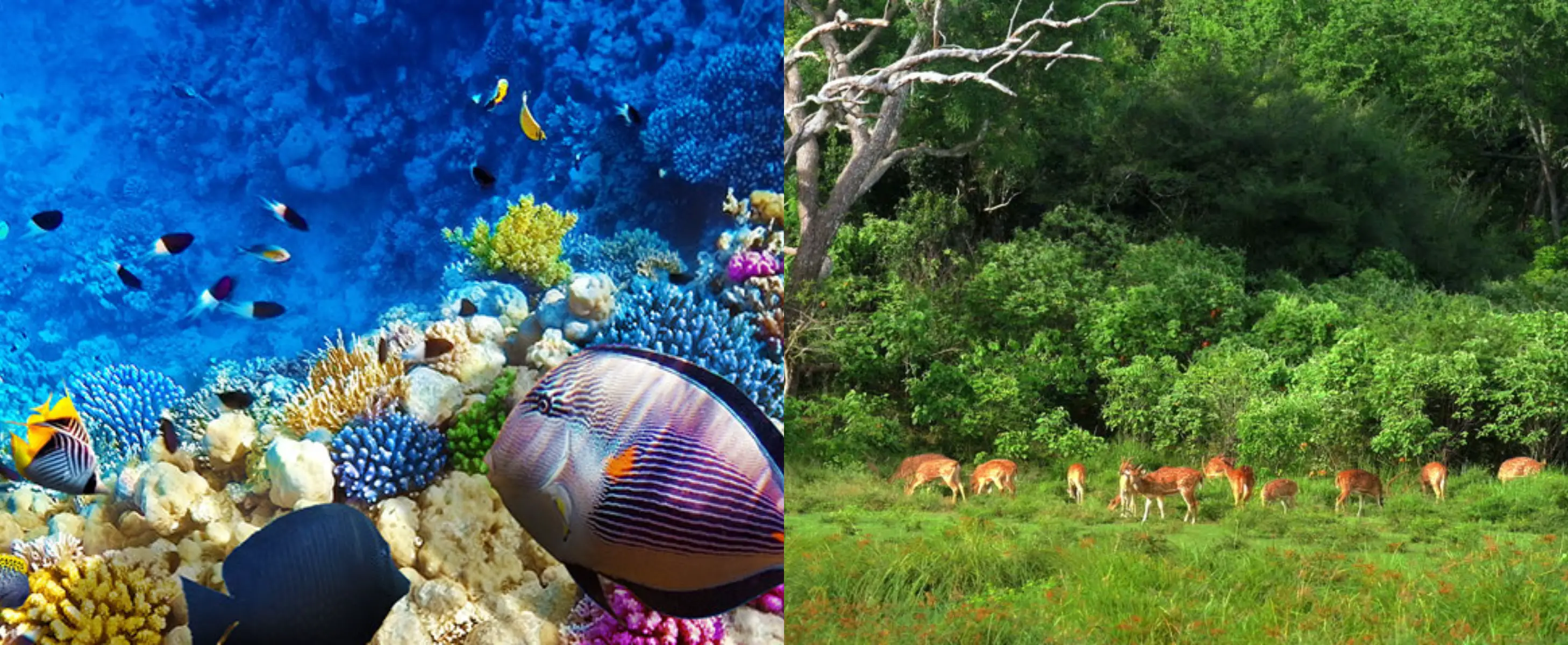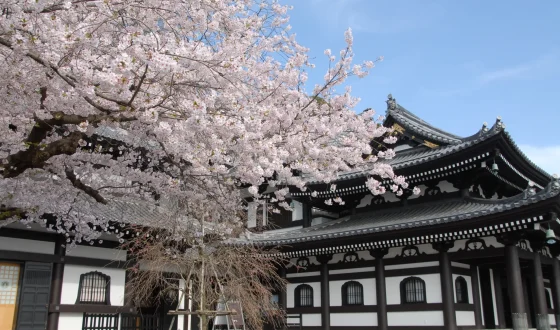Discover Animals In Japan – A Part Of The Amazing Natural World
Have you ever been curious about animals in Japan? When it comes to the Land of the Rising Sun, the images that cross your mind may be manga, anime, cherry blossoms, kimono, mochi, and many other traditional symbols of a rich culture. But did you know the fauna of Japan is very diverse, which even reflects the country’s history? Let us take you to the journey into the animal world of Japan – a wonderful adventure that really can blow your mind.
Top 15 Cool Animals In Japan
1. Tanuki
Tanuki is a Japanese raccoon dog that appears in many manga, anime and Japanese folklores and arts. As in tales, those raccoon dogs look so adorable with a dog – like appearance.
In reality, raccoon dog is nocturnal and they often wander in family groups. Their preys are small animals. Their habitat is rural environment.
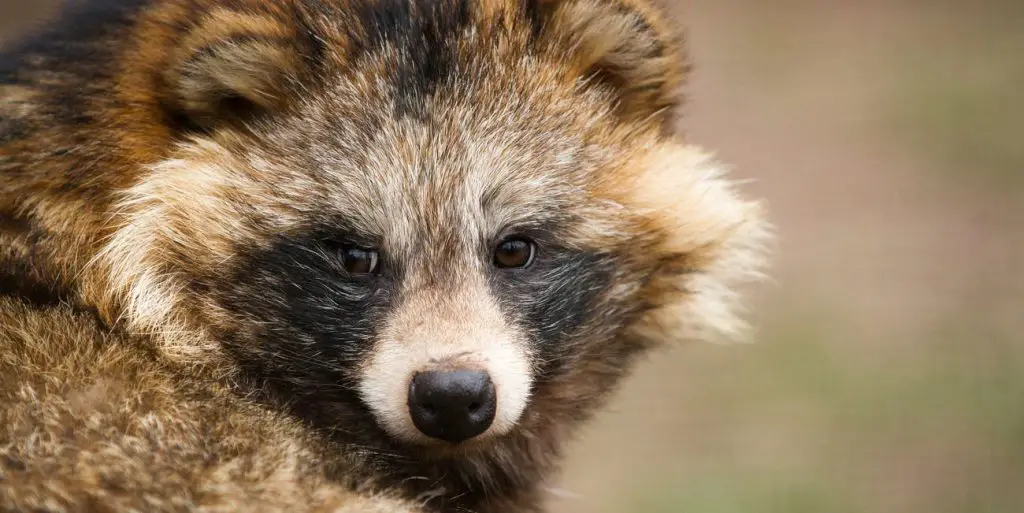
Tanuki is a Japanese raccoon dog that appears in many manga, anime and Japanese folklores and arts. (Source: inverse.com)
In comics and folklores, they are reputed to be playful and mischievous but very trustworthy. Sometimes, they would deceive humans, making them look foolish. Despite this, they are highly appreciated in Japanese culture as their statues are often placed at the gate of temples to bring good luck.
2. Leopard Cat
Japanese leopard cats are Iriomote Cat and Tsushima Cat. These cats are small like a domestic cat and have leopard-like spots on their hair. They inhabit Iriomote and Tsushima island. In Japan, the Tsushima Cat is endangered with the population of roughly 100. There are also fewer than 250 of Iriomote Cat left in Japan.
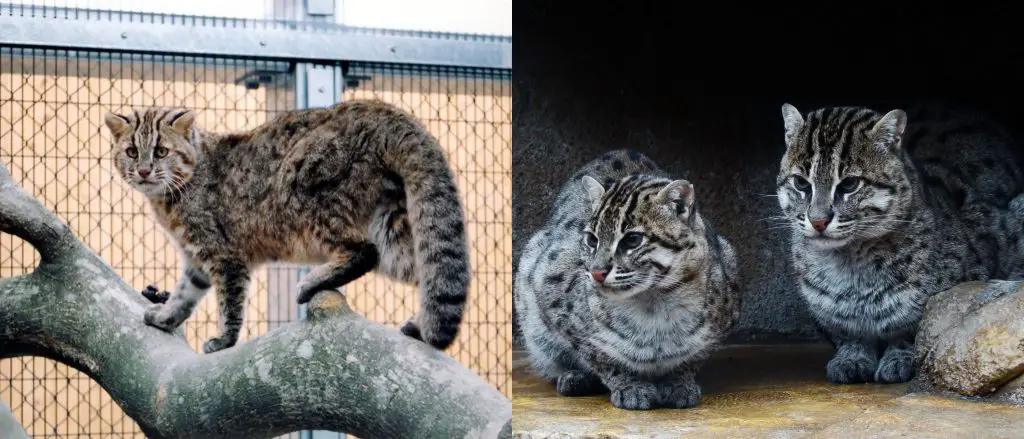
Left: Tsushima Cat. Right: Iriomote Cat. (Source: manateewoman.com and pinterest)
Many Japanese animals appear in manga or anime, not only Tanuki. These cats are also an inspiration for the characters of the manga-turned-anime “Tokyo Mew Mew”.
3. The Sika Deer
The Sika Deer is a wild animal native to some parts of East Asia. Currently, there are a very large number of this species living in Japan because of the extinction of its only predator, wolves, nearly a century ago. This deer is also found in many parts of eastern Asia and many other regions or the world like Europe, USA or Australia. Unlike other subspecies of deer, the Sika Deer do have spots or just have nearly invisible spots when reaching maturity. Their pelage color is in mahogany or black. The coat becomes darker during winter.
The Sika Deer is quite chill around humans as they are herbivores, they sometimes wander into towns and streets. In Japan, the largest among subspecies of the sika deer is Hokkaido sika deer, while the smallest counterpart is the Yaku deer.
There are plenty of those deers in the Nara Park in Japan.
4. Ezo Fukuro
Ezo Fukuro, also known as Ural Owl, is a Japanese owl native to Hokkaido prefecture. In Japanese, “Ezo” is the old name of Hokkaido and “Fukuro” means “owl”. You will see “Ezo” appears in many species of animals which are native to Hokkaido.
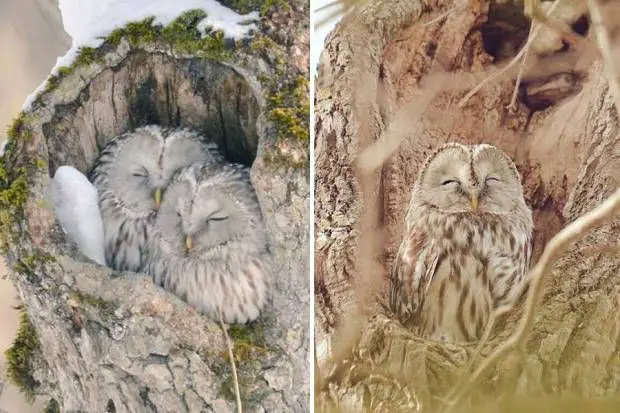
Ezo Fukuro, also known as Ural Owl, is a Japanese owl native to Hokkaido prefecture. (Source: pinterest.jp)
Ural Owl is nocturnal, but they are sometimes active during the day. They are often seen on the power line or utility pole. The onomatopoeic word for their calls are somewhat like “Hoh-hoh, Guruk Hoh-hoh”, and you can realize their presence by this sound.
5. Amami Rabbit
Amami rabbit is one of the wild animals native to Japan, only found in the Amamioshima Island. This wild rabbit is distinguishable among other subspecies of rabbit with a unique figure: short legs, short ears and thick and dark brown – colored pelage. The claws on their forefeet are strong and nearly straight whereas the ones on the hind feet are curved.
The amami rabbit has a primitive appearance.
There is a hypothesis that Amami rabbit is a descendant of ancient rabbits of the Eurasian Continent. No matter what, this rabbit is currently in danger of extinction as humans have introduced its predator, mongooses, into the natural habitat.
6. Ezo Naki Usagi
Ezo Naki Usagi, which is also known as “Crying rabbit”, is a subspecies of northern Pika. They are herbivores living in Hokkaido; they feed on herbs, ferns or mushroom. In winter, they often keep greens for eating.
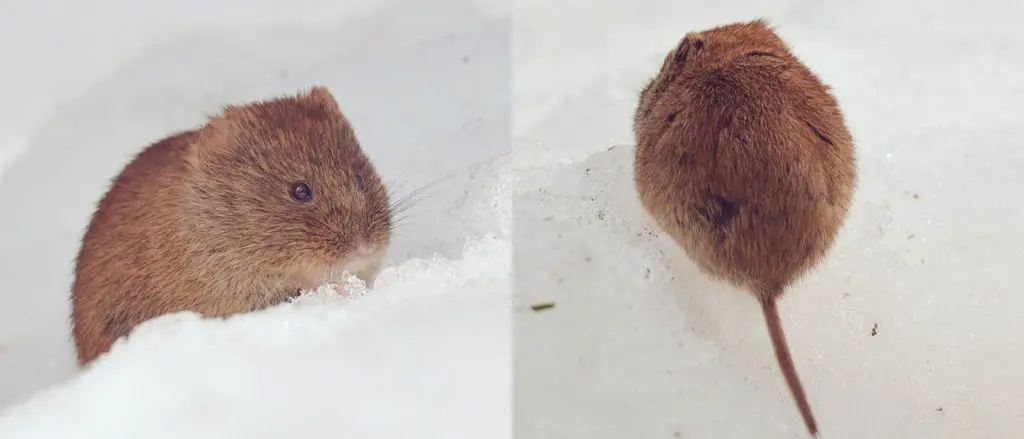
Ezo Naki Usagi is so cute, right? (Source: earthporm.com)
Many people argue that this animal is the inspiration for a famous Pokémon character, Pikachu. Maybe this is true as they are also a cute small animal that looks like a hamster, which can melt your heart at first sight.
7. Ezo Momonga
Another very cute animal from Hokkaido land is Ezo Momonga or Nihon Momonga, a dwarf flying squirrel. They have big round eyes, short legs, and flattened tails; therefore, they look like cute characters that come out of anime or manga.
Ezo Momonga lives in sub-alpine forests and boreal forests on Honshu and Kyushu islands. They often make their nests in the cavities of trees and rest here during the day. At night, they would come out of their nests to feed on tree leaves, buds, bark, etc. When they feed, they would assume a hanging posture.
Ezo Momonga is one of the cutest animals in Japan! This video will certainly melt your heart!
As the name suggested, Momonga can fly (actually leap) from tree to tree thanks to their patagium (a membranous structure that enables animals to glide or fly).
8. The Japanese Macaque
Japanese Macaque, or Snow Monkey, is one of the wild animals native to Japan.
They have pinky faces and posteriors and their fur is brownish grey or yellow. The average body weight of snow monkey is 8.4 kg in female and 11.3 kg in male. Average body length for males is about 57 cm (22.44 inches) and for females is 52.3 cm (20.58 inches). The tail is short, with an average length of 9.25 cm (3.64 inches) in males and 7.9 cm (3.11 inches). Their actual average lifespan is significantly low, with wild females living for approximately just 6.3 years.
They inhabit deciduous and evergreen forests. Moreover, they can live in areas where the temperature is as low as -20 °C (-4 °F). Macaques are semi-terrestrial, with females most often living on the trees and males on the ground.
Let’s see those monkeys hanging out in the hot springs.
This monkey is omnivorous so they can eat a wide variety of foods including soil, insects and over 213 species of plant. However, the diet is varied depending on different habitats and food availability is extremely seasonal. For example, with snow monkeys living on Yakushima island, fruits, fallen seeds and mature leaves are dominant in their diets. Also on this island, macaques eat more fruits in summer while more herbs are eaten in winter. By contrast, on the northern island of Kinkazan, main foods in the diet are fallen seeds, herbs or young leaves.
A noticeable and surprising fact about Japanese Macaque is that they are excellent swimmers and are said to be able to swim distances of over half a kilometer. They like to play in hot springs in winter. They seem quite carefree and innocent so visitors to Japan are comfortably watching or taking pictures of them.
9. Japanese Serow
Japanese serow is a goat-antelope endemic to the islands of Honshu, Shikoku, and Kyushu. The average body weight is about 25 – 140 kg and the length of the tail is 6 – 16 cm / 2.4 – 6.3 inches. Their fur is quite bushy and its color is white to grizzled black. Their legs are black or dark brown, and their lower necks also have a dark – colored ruff. Both males and females carry short and curved horns which are 8 – 15 cm / 3.2 – 6 inches in length. They have a long life expectancy of 20 – 25 years.
Japanese serow is found in dense woodland where they can easily camouflage. They mainly feed on coniferous leaves, flesh or acorns during the early morning or late afternoon.
Check out this video below to observe Japanese serow in the wild.
The serow lives in a solitary social structure, often wandering in pairs or family groups.
10. Pheasant
Green pheasant is exclusively found in Japan, mainly on the islands of Shikoku, Kyushu and Honshu. This bird is considered the national animal of Japan with the scientific name of Phasianus Versicolor. The male bird is distinguishable by the dark green plumage on the mantle, breast and neck. He also has a bluish-purplish hood, red wattle, and long pale grey tail. In contrast, the female pheasant is smaller than its counterpart, having a shorter tail and brownish black plumage with dark spots.
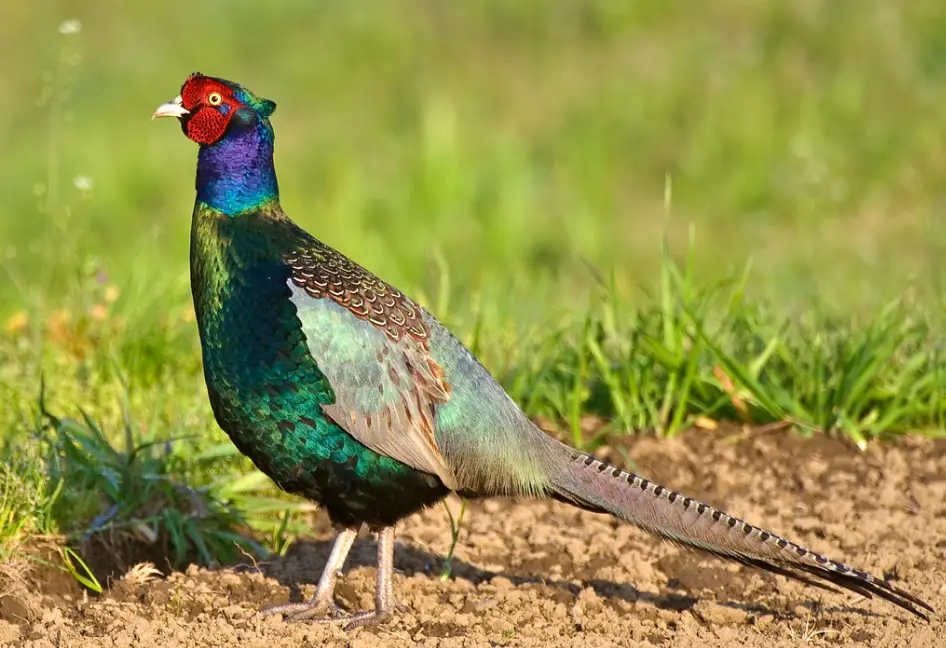
Green pheasant is the national bird of Japan, mainly found on the islands of Shikoku, Kyushu and Honshu. (Source: nationalpedia.com)
In nature, the green pheasant inhabits grassland, woodlands, forest edges, etc. Their breeding season happens in April and May. The females lay 6 – 12 eggs whose color is grey or olive grey. They usually incubate those eggs on the ground for 24 – 25 days.
The enemies of the green pheasant are snakes, vagabond dogs, and cats.
11. Red Crowned Crane
The red-crowned crane, or Japanese crane, is considered a symbol of luck, longevity, and faithfulness (in marriage). It has got the name because of the red “cap” on its head which is also its distinctive feature. The bird has a white feather and black wings. The males have black cheeks and neck while the females have pale grey ones. The red crowned crane should be awarded the best model of the birds’ world as they look so elegant: tall, slim and long-legged (the height is about 150 to 158 cm).
BBC channel made an informative video about this national bird.
READ MORE:
- If you want to buy something in Japan, read this article now!
- All of top things to do when you visit Asakusa are here.
This species lives in eastern Hokkaido in Japan. They are not migratory and nest in deep water areas such as wetlands, marshes, rivers, etc. As these birds are omnivorous, they feed on many kinds of food such as small fish, amphibians, grasses, reeds and other plants.
The female cranes often lay two eggs, and the incubation lasts for 29 – 34 days. Lifespan of wild animals in Japan, like the fauna in the world, is certainly unpredictable. And for the red crowned crane, the number is not well documented. However, the medium age is reportedly 15.1 years under the good condition of human care.
12. Dugong
We have nearly come to the end of the journey into the world of animals in Japan. Unsurprisingly, as the country with rich biodiversity, this world is not restricted to large paddy fields or deep forests. The marine world – the deep blue sea is home to a wide range of aquatic creatures, ranging from the biggest to the smallest, the most common to the strangest.
Dugong is a marine mammal living around the main island of Okinawa in Japan. The Dugong belongs to the order Sirenia (sea cows or sirenians). It is the only species of the family Dugongidae that exists.
The average length of Dugong is about 8 – 10 feet the weight falls between 510 and 1,100 pounds. The adult dugong has a smooth dark-grey skin. Their body has no dorsal fin or hind limbs, instead their two forelimbs are used as the paddle.
Let’s watch this video from a famous channel – National Geographic to have a practical perspective on this marine mammal.
Dugong is a herbivorous marine mammal. They use their snouts to root the underwater grasses and then chomp them with their lips.
Their average lifespan in the wild is quite long: about 70 years.
13. Giant Water Bug
The animals in Japan are not just cute ones but also include many scary and dangerous creatures. Japanese giant water bug, also known as “Taikouchi”, is a kind of water scorpion or “toe-biter”. They are reputed to be ferocious insects with sharp front legs and a beaked mouth to kill their preys.
The bug lives in streams and rivers on the islands of Honshu and Kyushu. You can also find them near the aquatic plants and in the flooded rice paddy fields or temporary pools.
Let’s watch a guy’s hands-on experience with this giant bug.
Taikouchi is carnivorous so their main foods are tadpoles and many other aquatic insects. The larger bugs can eat frogs or young turtles while the smaller ones eat larvae or snails.
One thing you should be careful with these marine “beetles” is their very painful bite.
14. Giant Water Salamander
Japanese giant salamander is native to Japan can be found mainly in western Honshu island. Their smooth skin is wrinkled and spotted with patterns in the shade of black and brown. Like other amphibians, the skin operates as a respiratory surface which enables oxygen to enter the body and release carbon dioxide. One special thing about the giant salamander is that they have one single lung not used for breathing but for buoyancy function.
Take a closer look at this slimy animal, don’t run too far!
The Japanese giant water salamander is the second largest salamander in the world. They often live in cold and fast – flowing streams where there is much oxygen. In these waters, they can camouflage under rocks and gravels.
The salamanders have poor eyesight; therefore, they have to rely on other senses (touch and smell) to detect their preys. They eat small insects, snails, worms, turtles, snakes, etc.
External fertilization is this species’ mode of reproduction. The females lay 400 – 600 eggs on gelatinous strings in the nest.
The giant water salamander appears in many Japanese legends and artworks, for example the ukiyo-e work by Utagawa Kuniyoshi. They are also said to be the inspiration for the famous mythological creature – kappa.
15. Spider Crab
It sounds strange but this is not the animal from fantasy or myths. As the name suggested, it is the combination of two scary animals: spider and crab.
Japanese spider crab, or “takaashigani”, lives in the southern coasts of the Honshu island. It has the largest leg span among arthropod, reaching maximum at 5.5 cm (18 feet). The body whose surface is covered with tubercles, hairs and spines looks like a crab but in orange color.
This video below is a collection of pictures of the biggest crab among all animals in Japan!
The spider crabs often live in holes in the ocean at the depth of 300m (980 feet). They consume both aquatic plants and animals (molluscs) as they are omnivore.
This species of crab is a delicacy in many regions of Japan. Maybe because of this, the number of the animals has reduced recent years due to humans hunting them for food.
Conclusion
We have introduced you to 15 Japanese animals, but of course, the world of animals in Japan is not that small. There are thousands of animals for you to explore: bear, fox, eagle, frog, whale, and so on. The diverse ecosystem of Japan definitely awakens your curiosity.

